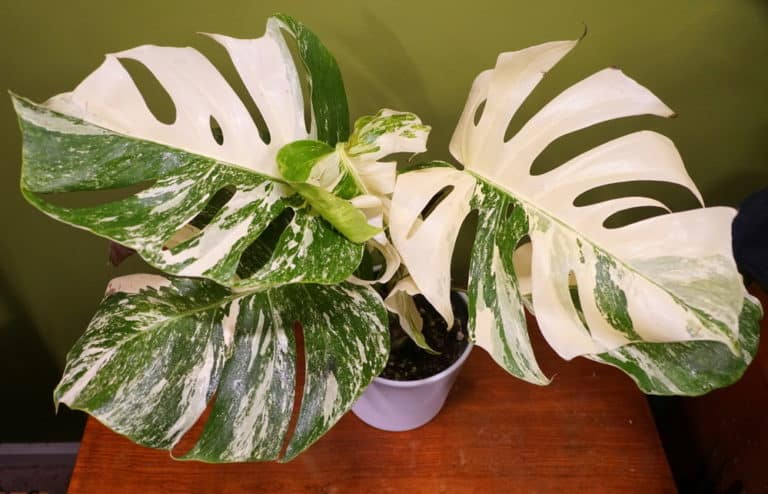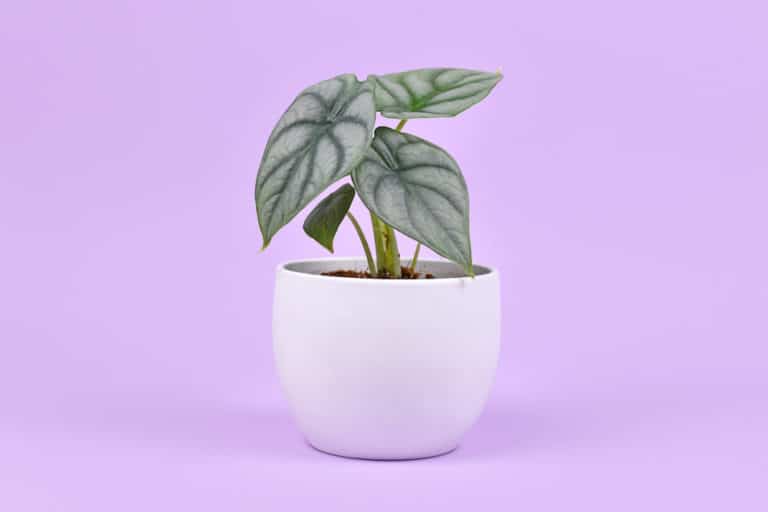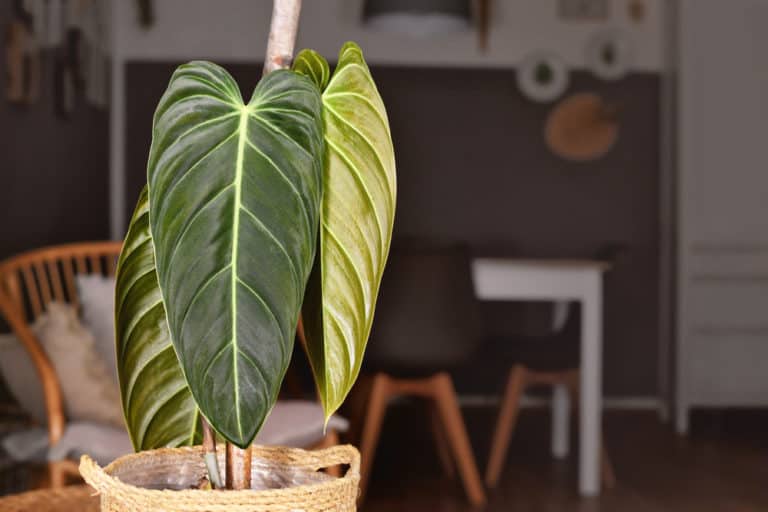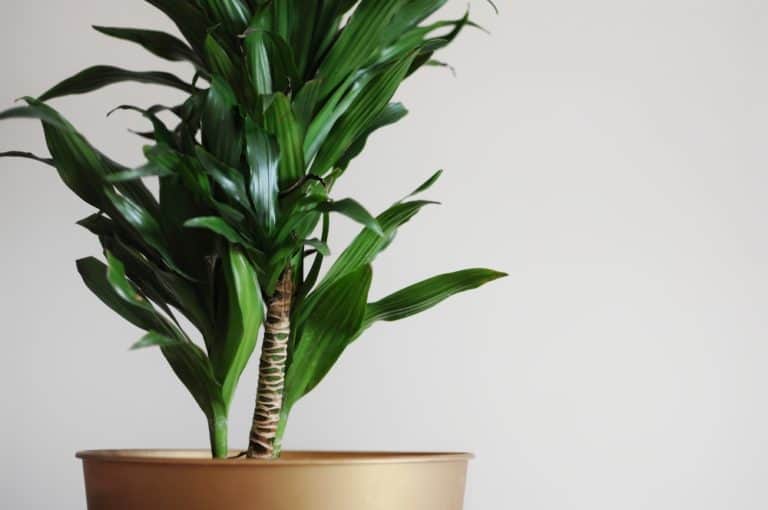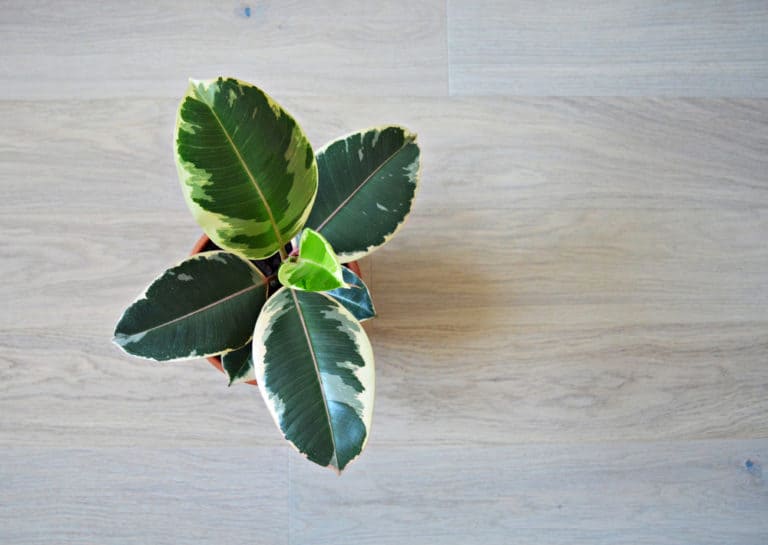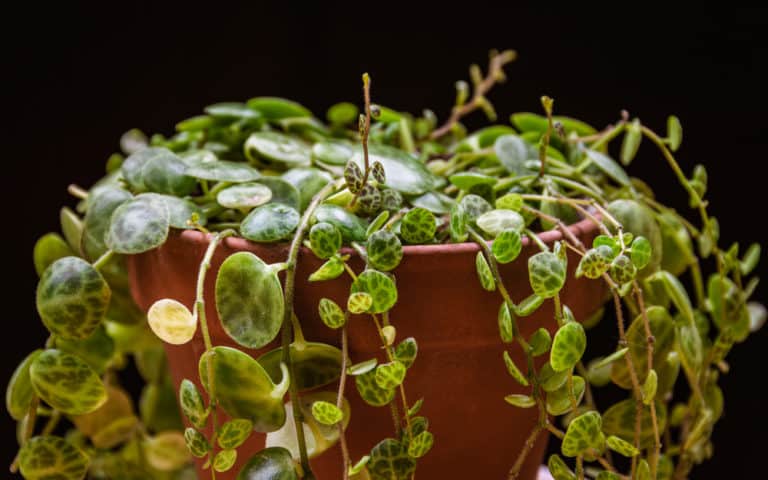Philodendron Brandtianum ‘Silver Leaf’ Care Guide (2024)
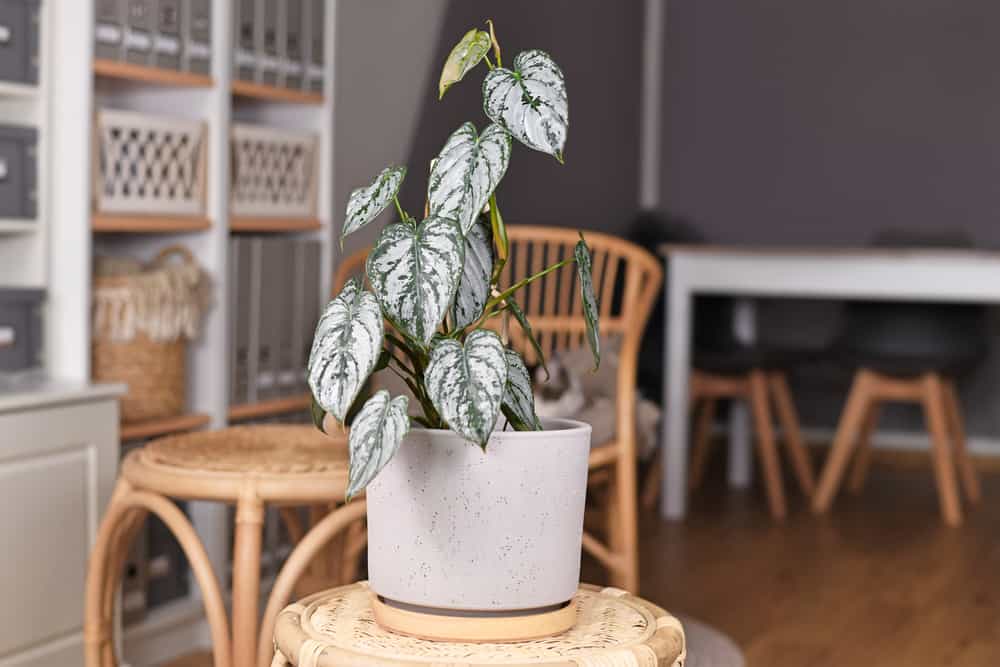
Philodendron brandtianum is a climbing tropical vine most notable for its gorgeous leaves.
It is often called Silver Leaf Philodendron, and with good reason, as its leaves are generously splashed with a silvery sheen.
Like all philodendrons, it’s very low-maintenance, and can easily be fitted into even the smallest living quarters to add a touch of green and silver.
| Scientific Name | Philodendron brandtianum K.Krause |
| Common Name | Philodendron brandtianum, Philodendron Brandi, Silver Leaf Philodendron |
| Light | Bright indirect sunlight |
| Watering | Water if the top 2 to 3 inches of soil are dry |
| Temperature | 65 to 95ºF (18 to 35ºC) |
| Hardiness Zone | 9b, 10a, 10b, 11a, 11b |
| Humidity | 50 to 60% |
| Soil Type | Rich, quick-draining, loamy |
| Soil pH | 6.1 to 7.3 (mildly acidic to neutral) |
| Fertilizing | A balanced feed once a month in spring and summer |
| Repotting | Every 2 years |
| Pruning | Beginning of the growing season |
| Propagation | Root in water or soil |
| Toxicity | Toxic to humans and pets |
| Mature Size | 4 to 8 feet as a houseplant |
| Bloom Time | Never blooms indoors |
What’s Unique About Philodendron brandtianum?
The Philodendron brandtianum plant is native to the tropical rainforests of Peru, Bolivia, Brazil, Ecuador, and Colombia.
Its heart-shaped leaves have a silvery sheen, making them a gorgeous addition to any indoor tropical garden.
Philodendron brandtianum plants are vining plants that can be trained to climb up a pole, or allowed to trail from a hanging basket or high shelf.
Growing Philodendron brandtianum is easy once you’ve mastered the key growing requirements for this evergreen tropical vine.
It can also serve a useful purpose in your living space. Philodendron brandtianum will filter dangerous contaminants such as formaldehyde from the air, giving you a healthier indoor environment.
Philodendron brandtianum Care
In the tropical rainforests where it originates, Philodendron brandtianum vines grow in dappled shade, with hot temperatures and high humidity..
Your Philodendron brandtianum plant care won’t be able to deliver that exact environment in your home.
However, your Silver Leaf Philodendron care can ensure adequate growing conditions without too much trouble.
Light
In the rainforest, Philodendron brandtianum is used to having the blazing tropical sun filtered through the tree canopy before it hits its silver leaves.
Philodendron brandtianum light requirements in your home are for bright but indirect light, or between 10,000 to 20,000 lux. This can usually be met without using grow lights.
The full sun can scorch its leaves, but too little light will slow down growth and leaf production.
You can easily satisfy your Silver Leaf Philodendron light needs by placing it right next to a north or east window.
However, in a south or west-facing room, you will need to find a spot out of the direct sun.
Watering
In the rainforest, Philodendron brandtianum is used to a moderate amount of moisture, but not sopping wet soil. It has similar watering needs in your home.
You should water Silver Leaf Philodendron whenever the top 2 or 3 inches of the soil are dry. Just stick your finger in to check.
The most effective Philodendron brandtianum watering is to slowly pour water over the entire soil surface, letting it absorb evenly.
After about half an hour, empty the saucer so that the pot will not be sitting in water.
If you use tap water, let it sit out for a day before using it. The fluoride and chlorine in treated water can damage your Philodendron brandtianum.
Temperature
Philodendron brandtianum is much happier in hot weather than in cool temperatures.
The Philodendron brandtianum temperature range is from 65 to 95ºF (18 to 35ºC).
You should easily be able to provide an adequate temperature for Silver Leaf Philodendron in any heated space.
However, avoid drafts and air conditioning vents, as Philodendron brandtianum has limited temperature tolerance below 55ºF (12ºC). You may need to move it away from windows in really cold weather.
Philodendron brandtianum has no frost hardiness, and will not survive a freeze. If you move your plant outdoors for the summer, bring it in well before winter.
Humidity
The ideal humidity for Silver Leaf Philodendron is a very steamy 80%. That’s what it evolved with in its native tropical rainforests.
Luckily, Philodendron brandtianum humidity requirements are more flexible than that. Usually it will be perfectly happy with a humidity level between 50 to 60%.
That’s still too high to maintain throughout your home, but you can still give your Philodendron brandtianum the humidity it needs.
It’s not a good idea to mist its leaves, as that can encourage fungal and bacterial disease.
Instead, the bathroom is a great place for Philodendron brandtianum, if the light is good enough.
Otherwise, you can invest in a small humidifier for all your tropical plants.
Soil
Your Philodendron brandtianum soil needs to be well-draining while at the same time retaining a moderate amount of moisture.
The pH level for Silver Leaf Philodendron soil is 6.1 to 7.3, or mildly acidic to neutral.
If you can buy a commercial aroid mix, that is an ideal soil for Silver Leaf Philodendron.
However, you don’t need a fancy soil mix for your Philodendron brandtianum. It will actually grow just fine in 100% peat moss, or peat moss mixed with an equal quantity of perlite.
If you throw in a handful of well-rotted compost, you won’t have to worry about fertilizing your Philodendron brandtianum.
Fertilizer
Philodendron brandtianum is not a heavy feeder, but using a fertilizer for Silver Leaf Philodendron will help it grow big and healthy leaves.
A standard balanced liquid formula can be used for Philodendron brandtianum fertilizer.
However, the foliage will be even better if you use a product with a fertilizer ratio of 15-5-10, as nitrogen boosts leaf growth.
Once a month in spring and summer, apply the fertilizer evenly across the soil surface. Do this right after you’ve watered the plant.
If you added compost when you potted your Philodendron brandtianum, you won’t have to do any additional fertilizing until you see leaf growth slowing down.
Potting & Repotting
Philodendron brandtianum repotting should be done every 2 to 3 years, or when you see the roots growing out of the bottom of the pot.
That’s a clear sign that your Philodendron brandtianum has become rootbound and needs more room to grow.
However, when repotting Silver Leaf Philodendron don’t increase the pot size too much. 2 inches wider will be plenty. Any more than that can actually set back your plant’s growth.
Always use fresh potting soil when you repot to give the plant a fresh start.
This is also the perfect time to give your Philodendron brandtianum a sphagnum pole to climb.
Pruning
Most Philodendron brandtianum pruning is just a matter of cutting off dead or damaged leaves.
You can do this any time during the year, because these leaves will detract from the beauty of your Silver Leaf Philodendron. Damaged leaves can also harbor disease or attract pests.
During the growing season in spring and summer, you can also trim your vine to limit its length or encourage more side stems for a bushier shape.
When cutting Silver Leaf Philodendron, always cut just above a node, which is where new growth will occur.
Never cut more than a quarter of the vine at any one time.
Always use sharp, sterilized scissors when pruning.
Propagation
Philodendron brandtianum propagation is not difficult, even for first-time indoor gardeners.
The easiest way to propagate Silver Leaf Philodendron is by rooting stem cuttings.
Examine your Philodendron brandtianum vine for stems with a few healthy leaves and at least a couple of nodes.
Cut 6 inch lengths, right below a node. This is where the new roots will form.
Strip off all but the top leaves, and put the stems in a jar of water, with at least one of the nodes submerged.
Keep the jar in a warm, humid spot in bright but indirect light, and change the water every few days.
Within 3 weeks you should have rooted cuttings that you can plant out.
Also, make sure to check out our in-depth Philodendron brasil care guide.
Common Problems of Philodendron brandtianum
Most Philodendron brandtianum problems can be avoided if you provide your plant with the growing conditions it needs to thrive.
However, if you do have some problems with Silver Leaf Philodendron, you can usually take measures to save your plant.
Carefully monitor the leaves of your Philodendron brandtianum, as they will show the first signs of any issues.
Pests
Bugs can do a lot of damage to your Silver Leaf Philodendron if they get out of hand.
However, most Philodendron brandtianum pests will be discouraged if you wipe down the leaves regularly with an organic insecticide like neem oil.
If bugs do turn up, there are simple methods to get rid of them.
Spider mites leave little yellow bumps on the leaves, and sometimes spin webs. You can rinse them off in the shower.
Scale insects look like brown bumps on the stems. They can be easily scraped off.
Mealy bugs are little white puffs on the underside of leaves. Wipe them off with a cotton ball soaked in rubbing alcohol.
Aphids are small green insects clustered on the stems and leaves. Vacuum them up.
Diseases
Philodendron brandtianum diseases are more likely to occur when you don’t carefully control soil moisture.
This can lead to fungal or bacterial diseases on your Silver Leaf Philodendron.
Root rot can easily take hold if you overwater. You will see yellowing leaves and mushy stems develop, and if you pull out the root ball some of the roots will be black, with a bad smell.
Cut out all affected parts, and repot your Philodendron brandtianum in fresh potting soil with good drainage.
Leaf spot can result if the foliage is wet, which is why misting is not a good idea for Philodendron brandtianum.
The first signs of this bacterial disease are yellow spots with reddish-brown edges. Cut out all affected leaves and improve the air circulation around your Philodendron brandtianum.
Growing Problems
Other Philodendron brandtianum growing problems just require a change in growing conditions to help your sick plant improve.
If the tips of your Philodendron brandtianum leaves are turning brown and crispy, it could be too low humidity or too much sun.
If the leaves are yellowing and it’s not root rot, it might be getting too little or too much sun. You will have to make that judgment call.
Drooping leaves may be a sign of too wet or too dry soil. Once again, you need to determine which is the case for your Philodendron brandtianum.
Slow growth during its growing season may mean it’s not warm enough. Make sure it’s not in a draft.
Toxicity of Philodendron brandtianum
Silver Leaf Philodendron, like all members of the araceae family, is toxic to humans and animals.
This toxicity is due to the calcium oxalate crystals that can be found in all parts of the plant.
While ingestion of the foliage is rarely life-threatening, precautions should be taken in homes with children or pets.
For Humans
Philodendron brandtianum is toxic to humans.
Children are especially at risk, as their natural curiosity may lead them to try eating a leaf. While they’re unlikely to swallow it, as it has an unpleasant taste, they may have pain around their mouth.
Wash off any plant material you can see, and rinse their mouth thoroughly. A popsicle or other cold treat may soothe the pain.
However, if your child has a swollen tongue or starts wheezing, take them to the emergency room at once.
You may have a rash after exposure to the sap. Rinse your skin thoroughly if this occurs.
For Pets
Philodendron brandtianum is toxic to pets, including cats, dogs, and rabbits. Calcium oxalate crystals can cause serious organ damage to your pet.
If your pet eats some of the foliage and starts drooling excessively, wheezing, vomiting, or has diarrhea, take it to the veterinarian immediately.
Do not be afarid to keep a Philodendron brandtianum in your home, even one you share with pets and children.
Silver Leaf Philodendron is often grown as a trailing vine in a hanging basket, which can be kept well out of reach of small creatures. You can also place a pot on top of a cupboard.
Philodendron brandtianum Appearance
The silver-splashed foliage of Philodendron brandtianum is the main appeal of the Philodendron brandtianum appearance.
Its vining habit makes it a natural choice for training up a pole or trailing from a hanging basket.
While you are unlikely to see a Silver Leaf Philodendron flower on your houseplant, the lovely leaves provide more than enough beauty.
Foliage
The foliage of Philodendron brandtianum is evergreen, meaning that it does not lose its leaves at the end of its growing season.
When a new leaf unfurls, it has an orange or yellow hue, but it soon turns olive green, with a generous splash of silver over top. The heart-shaped leaves can grow to 7 inches long.
This is likely where the development of Silver Leaf Philodendron leaves will end when grown in your home. It will not exit its juvenile phase when grown as a potted plant.
However, when grown in a tropical climate in the ground, the leaves of the Silver Leaf Philodendron vine undergo one last transformation. The silver color fades and the green darkens as they grow to a foot long.
Flowering
An indoor Silver Leaf Philodendron is very unlikely to bloom, as potted plants do not grow to a sufficient size to trigger the transformation to maturity.
Philodendron brandtianum flowering only occurs on mature plants grown in tropical regions.
Even then, blooming will only take place on a vine at least 30 feet long with about 10 feet of that trailing down.
The flowers are rather attractive, with a spathe that is green on the outside and purple on the inside, wrapped around a small white spathe.
However, with those exacting requirements, most Silver Leaf Philodendron growers will have to settle for the beautiful foliage.
Size and Growth
The size of Philodendron brandtianum depends on whether it is grown indoors or in the ground in a tropical zone.
In the tropics, a mature Philodendron brandtianum vine can stretch more than 30 feet, but a potted plant will usually stop at between 4 and 8 feet. It will grow about 4 to 7 inches wide.
Philodendron brandtianum has a fast growth rate and will reach its full size indoors in 2 or 3 years under good growing conditions.
It can be trained up a sphagnum pole for a narrow, vertical look, or allowed to trail from a hanging basket.
Philodendron brandtianum Fragrance
There is no Philodendron brandtianum fragrance. The vine will not flower when grown indoors, and the foliage has no scent.
On the other hand, growing a Silver Leaf Philodendron can make a real difference in the quality of the air that you breathe.
These vines can filter chemicals such as formaldehyde from the air, making your indoor environment healthier.
As well, especially in a small space like a studio apartment, a strongly-scented plant could be overwhelming.
However, you could add an essential oil such as geranium or lavender to the solution you use to clean your Silver Leaf Philodendron’s leaves to add a bit of fragrance.
Suggested Uses for Philodendron brandtianum
Because Silver Leaf Philodendron is a relatively compact vine, it takes up little space and can be used as a design element in even the smallest of rooms.
You can train it up a sphagnum pole in a corner to create a strong living vertical element, or let it trail down from a hanging basket.
Either way, it will take up very little or no floor space indoors, which is a real bonus in cramped quarters.
You can even use it to create a living screen for a bed alcove or home office.
If you move it outdoors to your balcony or patio in summer, it’s an easy way to create a leafy oasis in the city.
FAQ
What is Philodendron brandtianum?
Philodendron brandtianum is also called Silver Leaf Philodendron. It is an evergreen tropical vine native to the rainforests of South America, commonly grown as a houseplant.
How to identify Philodendron brandtianum?
Philodendron brandtianum is a vine with 7 inch heart shaped leaves that are olive green with large splashes of silver on the topside of the leaves.
How to care for Philodendron brandtianum?
Philodendron brandtianum should be grown in bright but indirect light in well-draining soil, in a warm and humid environment. It should be watered regularly and fertilized monthly.
How to grow Philodendron brandtianum indoors?
Philodendron brandtianum can be grown indoors as a climbing or trailing potted plant, where it should be kept in a warm, bright, and humid location.
How to grow Philodendron brandtianum outdoors?
Philodendron brandtianum can be grown outdoors year-round in a tropical zone. It should be planted in moist, well-drained soil in the shade, with supports for it to climb.
How fast does Philodendron brandtianum grow?
Philodendron brandtianum grows quickly, taking 2 to 3 years to reach its full size of 4 to 8 feet when grown indoors as a potted plant.
How tall does Philodendron brandtianum grow?
When grown indoors, a Philodendron brandtianum vine will reach a full length of 4 to 8 feet. When grown outdoors, it can be as long as 30 feet.
How to make Philodendron brandtianum grow faster?
Philodendron brandtianum will grow its fastest when grown with humidity as high as 80% and temperatures up to 95ºF (35ºC), while being watered and fertilized regularly.
How to stake Philodendron brandtianum?
Philodendron brandtianum should be staked with a sphagnum moss pole to encourage vigorous growth. It can also be planted in a hanging basket to trail down.
How to pot Philodendron brandtianum?
Philodendron brandtianum should be potted in rich, well-draining soil, in a pot with good drainage holes. An unglazed terra-cotta pot will allow the soil to breathe.
How to revive Philodendron brandtianum?
If your Philodendron brandtianum soil has dried out completely, you need to submerge the pot completely in water until all the air bubbles out and the soil is saturated.
Why is my Philodendron brandtianum dying?
Your Philodendron brandtianum may have a disease caused by too-wet conditions. Cut off all infected parts, spray with a fungicide, and replant it in fresh soil.
Why is my Philodendron brandtianum drooping?
Your Philodendron brandtianum may be in soil that is too dry or too wet. Check the soil moisture and either water it thoroughly or replant in a fresh, porous soil mix.
How cold can Philodendron brandtianum tolerate?
Philodendron brandtianum will not grow well below 55ºF (12ºC). Keep it out of drafts. Freezing temperatures will kill this tropical native. Do not expose it to frost.
How to get rid of pests on Philodendron brandtianum?
Once you have removed infestations, Philodendron brandtianum pests can be prevented with the monthly use of neem oil or insecticidal soap when wiping down the leaves.
Is Philodendron brandtianum toxic to cats?
Yes, Philodendron brandtianum is toxic to cats. If your cat eats some foliage and starts vomiting or drooling, take it to the veterinarian as soon as possible.
Is Philodendron brandtianum toxic to dogs?
Yes, Philodendron brandtianum is toxic to dogs. If your dog starts wheezing, vomiting, or drooling excessively, take him to the vet to prevent serious organ damage from developing.
Is Philodendron brandtianum toxic to children?
Yes, Philodendron brandtianum is toxic to children. If your child has eaten some and has a swollen tongue or constricted airways, take them to the emergency room immediately.
Is Philodendron brandtianum toxic to humans?
Yes, Philodendron brandtianum is toxic to humans. If you get some of the sap on your skin, rinse it off with soap and water and use an antihistamine cream if necessary.
Does Philodendron brandtianum have a scent?
Philodendron brandtianum does not have a scent. It never flowers indoors and the foliage is fragrance-free, making it suitable for use around people sensitive to fragrances.

